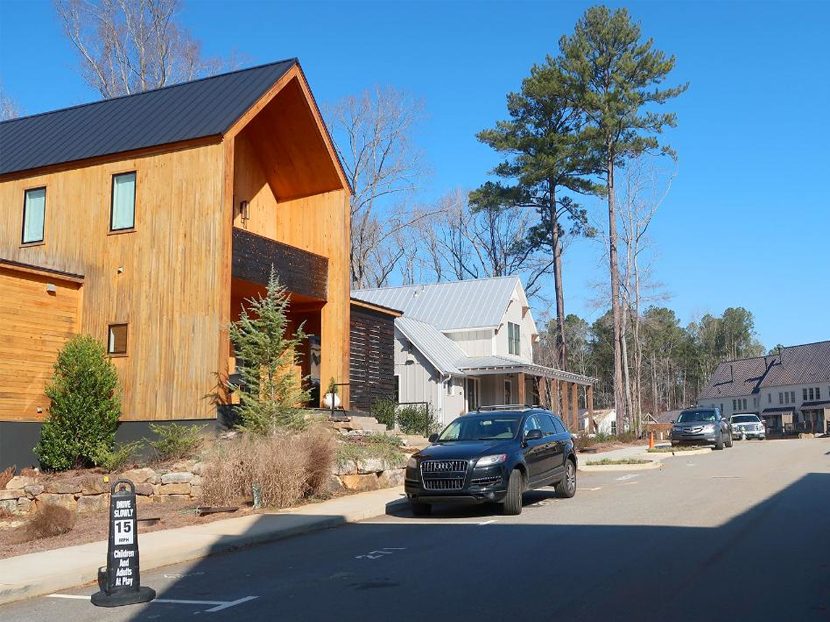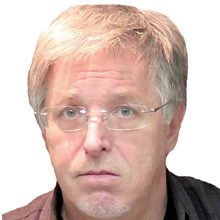We Live in Interesting Times
Upheaval can provide different perspectives and inspire potent new directions.

In 1966, Robert F. Kennedy alluded to the curse: “May you live in interesting times.” It is used between diplomats and government people to good-naturedly wish anarchy on a foreign adversary.
As I write this, “interesting times” are raging outside. Police are brutalizing racism protesters all across America, COVID-19 deaths continue to increase and are spreading into the smaller towns, a recession is beginning to take hold, it’s more than 90 F in Siberia, and nobody is hopeful about the coming forest fire and tropical storm seasons.
At the same time, there are many people drawing inspiration and hope for the future from the unusual situations presenting themselves. People are working on reforms, starting creative new ventures, discovering an appreciation for the simple joys in life such as walking and reading. They also realize that some of the new ways in which we work, and perhaps don’t work, could be applied permanently — and add to our quality of life.
Time, Change and Creativity
Kennedy also said: “Like it or not, we live in interesting times. They are times of danger and uncertainty; but they are also the most creative.” In other words, perhaps upheaval provides different perspectives and inspires potent new directions.
Staying home and hitting the snooze button on the rat race gives us time to review, evaluate and create a new way forward. It also provides the context in which to reflect on our understanding of time itself.
We can stop for a moment and realize that clocks, month-end, Q2 and Q4, are all human constructs. Driven relentlessly from one deadline to the next, one paycheck, mortgage or tuition payment to the next, we sometimes forget that these creations of society might actually be optional, might actually be choices we’ve made. Commitments, yes; necessities, possibly not.
It’s similar in our occupation or business. The mundane repetition of the same old way is safe, easy and predictable. It’s comfortable, but it might not be exciting and it might not be healthy. Because, like it or not, change is taking place, and it’s taking place in people’s minds as much as it’s taking place in our society. The two are inextricably linked, but only some change is immediately discernable.
The key point is that change is moving in different directions and at different speeds for everyone. Change is complex and unpredictable and worthy of continuing consideration.
Serenbe: A Different Way to Do Development
Nearly 20 years ago, Steve and Marie Nygren set out to create change in an approach to residential developments in suburban Atlanta. They had retired early and moved out of the city to a pastoral watercolor of green, forested acreage. No sooner had they settled into the wild country with their family when they heard the sound of bulldozers on a nearby plot of land.
They made inquiries and began organizing like-minded nature lovers of means. The offending project was purchased and halted. Designers were hired, advocacy was undertaken and, gradually, a new kind of habitat took shape. This group wanted to build a greener, healthier, intentional new urbanist community in the beautiful, rolling woodlands southwest of Atlanta. They would name it Serenbe, roughly meaning, “being serene.” They may have been ahead of their time.
The central idea was to preserve 70 percent of the land in its natural state to ensure that residents would always be able to hike, bike and benefit from a strong connection to nature. A logical extension was to use a sustainable building model and to design community amenities around a wellness theme.
Land clearing would be restricted only to the immediate area of the houses themselves and diverse buildings were mixed in dense groupings to create the feeling of organic small-town development over time. Design elements such as natural curving streets, front porches, “town centers” and communal mail stations were included to increase neighborly interactions and healthy living.
Ground-Source Cooling
About two-thirds of the homes in Serenbe’s first three hamlets are cooled (and heated) by WaterFurnace or Bosch ground-source heat pumps, with one or two 400-ft.- to 600-ft.-deep boreholes for each residence. Most have high-quality windows and extra insulation.
Plumbing is low-flow, hot water is on-demand and drain water is treated on-site and reused for irrigation. The homes are certified under a local green standard called EarthCraft and cost 30 to 60 percent less to operate, with similar reductions in their greenhouse gas emissions. In Sweet Apple, one of the company’s newest developments, solar panels and batteries are being added.
It’s doubtful that the Nygrens were in any hurry, but some members of their eventual development group likely did not foresee what has become a long development journey in Serenbe. Any who believed huge numbers of Georgians would see the value and pay about 20 percent more for a home in the Chattahoochee Hills would have been disappointed in the early years.
Green Features Are Now Selling Well
In January, before COVID-19 dominated every human interaction, I was invited to meet some members of the management team at a charming little coffee house with cappuccino, banana bread, old-time general store furnishings and a rustic, natural brick inside. There was an ice storm in the northeast and an uncharacteristic cold snap in Atlanta, but everyone was cheerful at the Blue Daisy Bakeshop in Serenbe.
When asked about the success of the development, the team focused on the past five years. During the first 10 years, fewer than 200 homes were built. Now there is a good deal more activity and excitement.
“It has really picked up steam in the last two years,” says Steve Allie, Serenbe’s on-site building manager. “It’s easier to sell units with green features, compared with 15 years ago, when green was more of a feel-good buzzword. Now folks are actively seeking healthy, environment-friendly homes.”
In 2017, the Global Wellness Institute estimated the green-themed real estate business to be worth more than $52 billion in the United States, and $134 billion around the world. It predicts growth to rise to $180 billion by 2022. Change on the ground in the Chattahoochee Hills has finally caught up with the kinds of change the Nygrens had in mind some 15 years earlier.
“We attract inner-city people who want to escape the hustle and bustle of Atlanta,” Allie says. “A lot of folks work from home.” He oversees construction of Mado, Serenbe’s third neighborhood, consisting of 200 homes — plus a community center containing a fruit bar, a vegan-based restaurant, a wellness center, a chiropractor, a fitness facility and yoga room. “They like living and working in the country; at the same time, they’re just 40 minutes from downtown. And even closer than that to the airport,” he adds.
Quiet and Capable
The three-story community building and a few nearby homes will be cooled by a 150-ton water-source loop in a nearby deep pond, described by mechanical designer Tim Uzur as “a great way to dispose of heat because it’s much deeper than we thought.” He explains that the heat sink is achieved using a device that looks like a big stainless-steel radiator called a slim-jim. One lesson learned is they sometimes rust; on another project, he recently replaced one with plastic piping.
Uzur notes that most of the Mado houses have their own systems, some beneath the buildings and others adjacent to them. He prefers the latter, in case maintenance is needed, although it’s a rare occurrence for a properly installed ground-source system.
“One of the big advantages of ground-source cooling is noise pollution is eliminated,” he explains, “because there are no loud compressors outside. In the summer in this area, it’s 100 degrees every day, so normally it would sound like an airport around here. When buyers come here, they are struck by how quiet the cooling is. You can hear the birds sing. People really like that.”
Another advantage of ground-source solutions is they have the capacity and long-proven capability to handle the heavy lifting, such as big heating loads in northern climates and challenging structures. As we move away from BTU-chugging appliances, some building envelopes cannot be improved enough for air-source solutions — ground source can easily pick up the slack.
Examples include institutional buildings with heritage designations that restrict some structural modifications. But perhaps more significant is our looming retrofit challenge. Governments want cleaner systems in existing buildings and occupants want healthier indoor air. Ground-source heating/cooling systems can help with both of these needs.
In a future column, I’ll provide an update on a massive retrofit undertaking in the northeast that is ramping up more quickly than most people realize. It’s being led by New York and companies such as Dandelion, but it’s spreading rapidly to other states in the area as well.
Power Efficiency
As our interesting times continue, more of us are likely to be working from home offices, to which we seem to be continuously adding sophisticated electronic equipment. Meanwhile, municipalities are pushing the electrification of building systems and vehicles. As the power load at home grows, a ground-source system also deserves recognition for its efficiency. It boasts a coefficient of performance of about 4.0 and sometimes higher.
That can help when the electricity bill comes in after you’ve worked at home for a month and taken some long trips in your bullet-resistant Tesla Cybertruck.
As we all know, many of the frustrations now being expressed in the streets relate to the inequitable distribution of wealth and opportunity in our society, so it is important to note that green technology is no longer only for the rich.
A few months ago, I wrote in this space about a new housing development in Austin, which, like Serenbe, focuses on wellness, nature and clean energy. Perhaps because it is newer, the housing model at Whisper Valley seems to result in lower prices and plenty of smaller homes. In addition, the developer said that green features added about $120 to the total mortgage cost, while utility costs dropped from a couple of hundred dollars to less than $50 per month.
Before COVID-19 kept me home, I had spent a good deal of time traveling and looking at green projects, where I found similar stories. Increasingly, there is little or no up-front cost premium connected with clean systems in single-family residential developments, multifamily, commercial, retail and affordable housing projects.
The dropping costs and improving efficiencies of the technologies involved have been making it possible to build better and greener at the same time. For example, microgrid software is used to connect the Austin geothermal systems and optimize the whole network as one system. This creates a load saving of about 60 percent.
In addition, the inclusion of solar panels and home batteries in numerous projects is helping to add to the supply of inexpensive electricity. Panels and home batteries are both becoming more affordable with each passing year.
While at home, I’ve been doing more new technology webinars. Recently, some audience members emailed me afterward, asking for more information on training, consultants and technologies.
One well-established HVAC professional in Baltimore remarked: “It really is time for us to change. Our company has to start doing things differently. I think we can create a better world by learning more about these systems.” I connected her with a builder in Philadelphia who specializes in low-carbon multifamily projects.
She’s absolutely right. Kennedy said: “If our times are difficult and perplexing, so are they challenging and filled with opportunity.” Let’s find those opportunities and create something better.





